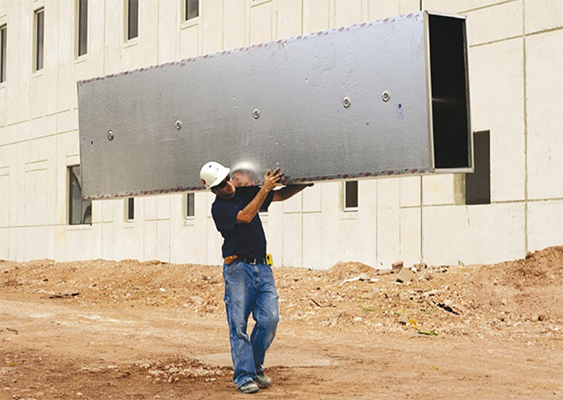Saying that pre-insulated phenolic ductwork is a sustainable and cost-effective option compared to traditional galvanised sheet steel ductwork, Sarmad Fakhri makes a case for the former, in light of the first SMACNA’s Phenolic Duct Construction Standard.
 It is now widely recognised in scientific circles that global warming is real, and that manmade greenhouse gases are a major factor in its escalation. Governments across the globe are setting targets to reduce emissions and tackle climate change, with initiatives, such as Dubai’s Integrated Energy Strategy; Abu Dhabi’s Vision 2030; and Qatar’s National Vision 2030. The move towards energy-efficient products to help meet these targets is gathering momentum in the HVAC industry, and sometimes, there are unexpected benefits to be found along the way.
It is now widely recognised in scientific circles that global warming is real, and that manmade greenhouse gases are a major factor in its escalation. Governments across the globe are setting targets to reduce emissions and tackle climate change, with initiatives, such as Dubai’s Integrated Energy Strategy; Abu Dhabi’s Vision 2030; and Qatar’s National Vision 2030. The move towards energy-efficient products to help meet these targets is gathering momentum in the HVAC industry, and sometimes, there are unexpected benefits to be found along the way.
Pre-insulated phenolic ductwork is a simple and cost-effective way to improve energy efficiency and reduce operational energy demand, and with the development of the first SMACNA (Sheet Metal and Air Conditioning Contractors’ National Association) Phenolic Duct Construction Standard (PDCS) last year, it is safe to say that it has truly come into its own as a mainstream product.
The published SMACNA PDCS provides detailed information and guidance on all aspects of pre-insulated phenolic ductwork fabrication, from fire performance requirements to detailing the specific thickness of product to be used to achieve a certain R-value.
The positives
Ductwork has traditionally been constructed using galvanised sheet steel, with insulation usually installed as a separate activity. Pre-insulated ductwork has integral insulation, ensuring maximum continuity and minimum thermal bridging. It also has very low levels of air leakage and, when fabricated correctly, it can help systems to run more efficiently and conserve energy on all fronts.
Pre-insulated phenolic ductwork is extremely lightweight, weighing as little as 18% of the equivalent galvanised sheet steel ductwork. Its lightweight nature means that several sections can be joined together at floor level before being installed.
An example of the guidelines provided by the SMACNA PDCS stipulates that duct length segments are permitted to 154 ¾ in. (3930 mm) with a width of up to 44 in. (1100 mm). For phenolic ductswith a dimension of more than 44 in. (1100 mm) to 80 in. (2000 mm), duct length segments are limited to 47 ¼ in. (1200 mm) in length. For duct(s) with a dimension over 80 in. (2000 mm), installers are advised to consult with the phenolic panel manufacturer.
An added benefit of the thin and lightweight properties of pre-insulated phenolic ductwork is that it is particularly well-suited to projects where space and structural loading might be an issue. For projects with long spanning roofs, such as airports, this can be particularly helpful. It is also easy to handle, and can considerably speed up the installation process.
Under the SMACNA PDCS, all ducts required to meet Class 1 Air Duct rating must comply with UL Standard 181 (Underwriters Laboratories: Factory Made Air Ducts & Air Connectors). Pre-insulated phenolic ductwork, in general, can easily meet these requirements; however, it is important to refer to the manufacturer for specific product performance details.
These excellent fire properties, together with high levels of thermal performance and low Global Warming Potential (GWP) ensure that the product will perform well, both in terms of safety and operational environmental impact.
Becoming the norm
As the demand for better performing HVAC ductwork systems increases, pre-insulated phenolic ductwork is rapidly becoming the norm in many countries across the world. SMACNA’s new standard confirms its place in the industry as a mainstream modern solution.
Sarmad Fakhri is the Managing Director, Kingspan Insulation. He can be contacted at info@kingspaninsulation.ae
CPI Industry accepts no liability for the views or opinions expressed in this column, or for the consequences of any actions taken on the basis of the information provided here.
Copyright © 2006-2025 - CPI Industry. All rights reserved.